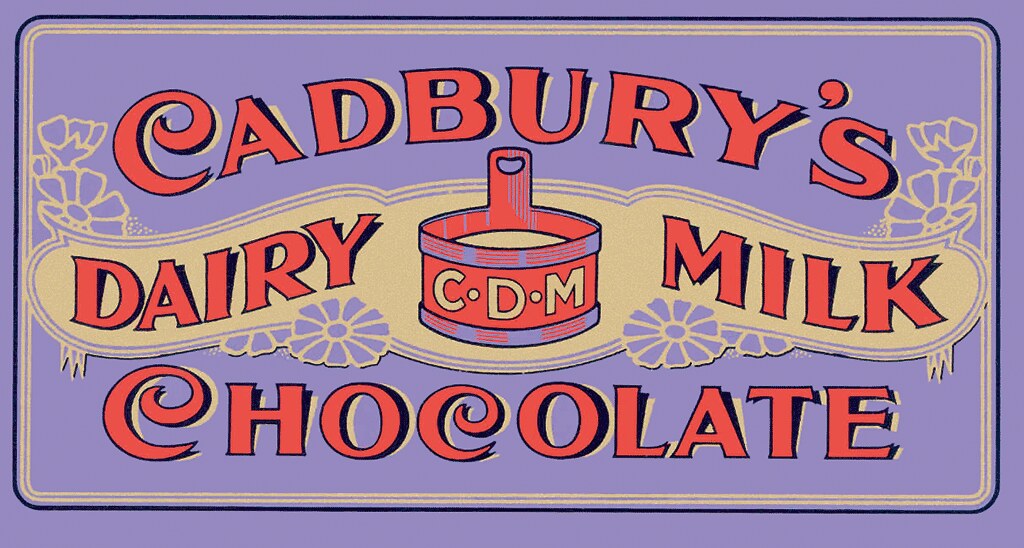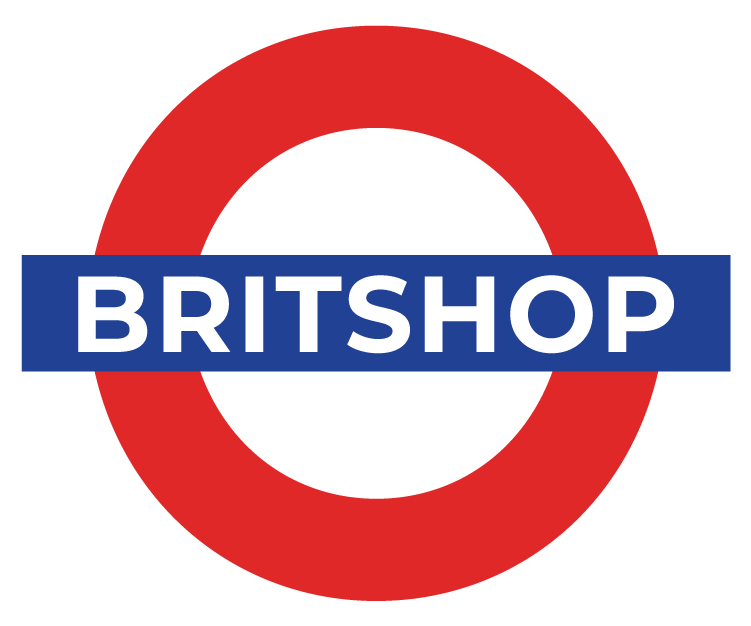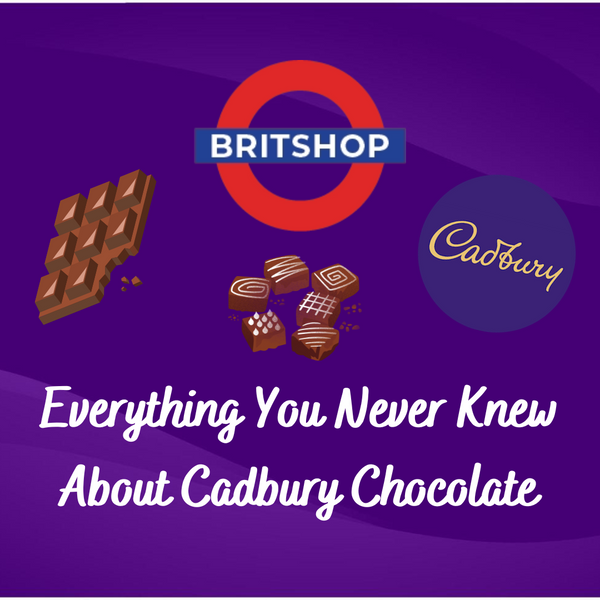Everything You Never Knew About Cadbury Chocolate
Here at BritShop, Cadbury chocolates are a staple and among our customers' favorite British treats. Whether it be a classic chocolate bar, a Creme Egg, or something a little more unique, Cadbury is a British brand and company that has been catering to international chocolate lovers for over a century and a half.
So if you're someone who can't go too long without their Cadbury fix, you might be interested to know some lesser known facts about the chocolate that started it all.
How Cadbury All Began
The founder and namesake of Cadbury chocolate was John Cadbury (1801-1889). He was born into a wealthy family of Quakers, a Protestant Christian denomination known as the Religious Society of Friends.
Since his religion generally frowned upon joining the military, Cadbury sought his sights on following in his father Richard's footsteps by opening his own business. Richard had opened his own drapery shop in 1794 on Bull Street in Birmingham, England, which eventually developed into an upscale department store that would later be known as Barrow's Stores.
In 1824, John opened his own grocery shop next door at 93 Bull Street, where he sold tea, coffee, and cocoa. Once Cadbury started selling drinking chocolate, it was popular enough that he started to commercially manufacture it himself, opening up a warehouse on Crooked Lane.
By 1842, he was selling 16 lines of drinking chocolate and 11 lines of cocoa. Four years later, the business had grown enough that he decided to enter into a partnership with his brother Benjamin, with whom he established Cadbury Brothers. In 1847, they moved to a new factory space on Bridge Street.
By this time, John had also become the owner of Barrow's Stores, which he passed on to his son Richard Barrow Cadbury in 1849. The following year, John and Benjamin decided to stop working retail. The brothers' partnership was mutually dissolved in 1856, and John retired in 1861.
His sons Richard and George took over Cadbury thereafter, which was in bad shape and losing money. The Cadbury shop on Bull Street was absorbed by Barrow's Stores, which strengthened as it focused less on tea and coffee and more on chocolate into the 20th century. With Cadbury's legacy, Barrow's remained open and in the family until 1964, when it was bought by Fitch Lovell. By the end of 1973, Barrow's was merged into an existing supermarket chain.
The First Chocolate Bars

The year 1847 produced the world's first chocolate bar: Fry's Chocolate Cream. Founded in Bristol in the 18th century, Fry's was Cadbury's central competitor, which prompted them to hunker down and quickly create a chocolate bar of their own. The first Cadbury chocolate bar appeared two years later in 1849.
But it would only be in the 1860s, under Richard and George Cadbury's ownership, did the Cadbury company's chocolate bars start taking off. It was John's sons who started importing a new and improved form of cocoa into Britain.
Developed in the Netherlands, this cocoa had removed the unusable parts of the cocoa butter from the bean, which made it exponentially easier for companies such as Cadbury to mold chocolates into different shapes. Thus, in 1868, the first heart-shaped Cadbury chocolates were sold for Valentine's Day. It was this innovation that led to the common gift of a box of chocolates for your loved one each year on February 14th.
The first Cadbury Easter egg was introduced in 1875, considered the first chocolate Easter egg that led to countless other companies producing their own versions for the holiday. By 1893, 19 lines of Easter eggs were sold by Cadbury each year.
By the end of the 19th century, milk chocolate bars were becoming common in countries such as Switzerland, which prompted Cadbury to produce their first milk chocolate bar in 1897. In 1905, the most widely popular and beloved form of Cadbury chocolate made its first appearance: the Cadbury Dairy Milk bar.
Developed by George Cadbury, Jr., it differed from other existing milk chocolate bars in that it was produced with a higher volume of milk, hence the decision to include "dairy milk" in its name. The Cadbury Dairy Milk bar also marked the first time that a British company was able to mass-produce chocolate. One thing about them that's always remained the same is its distinctive purple wrapper.

What's Bournville?
You might recognize the name Bournville as your favorite dark chocolate Cadbury bar, which was first sold in 1908. But it was named after something much more significant.
Still operating out of the factory on Bridge Street opened by their father in 1847, Richard and George decided that it was time to expand. In 1879, they moved the factory business to Bournville Hall, six kilometres south of Birmingham.
The Cadbury company relied heavily on the British canals for ships that delivered milk and the railways for trains that delivered cocoa. Although in a fairly rural area, Bournville Hall proved to be the ultimate spot for their factory, given that there was a train station nearby and it was close to the canal. Win win!
It was the Cadburys, in fact, who named the area Bournville, after a nearby river called The Bourn. Working conditions for the developing Cadbury factory there were considered exceptionally good for the era, a time period marked by horror stories of poverty-stricken, union-less factory workers being quite literally worked to death by their employers. They were paid relatively high wages and the Cadburys even introduced pension schemes and employed a full medical team for their staff.
The company's investment in their employees and their wellbeing did not end there: in 1893, George bought 120 acres of land in Bournville where he planned to build a model village that would "alleviate the evils of modern, more cramped living conditions." By the turn of the 20th century, the village encompassed 313 houses and cottages across 330 acres where Cadbury factory workers and their families lived.
Today, Bournville remains a popular residential suburb of Birmingham, and Cadbury continues to be one of the area's central employers. Cadbury World, an attraction demonstrating the history of chocolate, opened there in 1990.

Cadbury and the World Wars
In 1910, Cadbury sales overtook that of Fry's for the first time, and by 1914, the Cadbury Dairy Milk bar had become the company's best-selling product. The Cadbury Milk Tray, introduced the following year, also became high in commercial sales.
With the onset of the First World War, over 2,000 male Cadbury employees joined the British Armed Forces. In support of the troops, Cadbury provided the army with clothing, books, and of course, chocolate. George, Sr. even donated two Cadbury-owned buildings to the war effort to use as hospitals.
During times where men were at war, it was common for women to take over vacant factory positions, regardless of cultural gender roles. Cadbury's factory girls were nicknamed "The Cadbury Angels," and they also volunteered to do the laundry of soldiers recovering in the nearby hospital buildings. After the war, the Cadbury company launched their first overseas operation in Hobart, Tasmania.
In 1919, Cadbury acquired J.S. Fry & Sons, the company that had produced the world's first chocolate bar, integrating the best-selling Fry's Chocolate Cream and Turkish Delight under the Cadbury brand.
This success also resulted in the introduction of numerous new additions to the Cadbury product line: Flake in 1920, Creme eggs in 1923, Fruit and Nut in 1928, and Crunchie in 1929. By 1935, Cadbury had taken complete creative control of the Fry company, which was rapidly declining.
Dairy Milk Whole Nut first appeared in 1933, and Cadbury Roses were introduced in 1938 as competition for Mackintosh's Quality Street. Cadbury's success during this era is credited with making chocolate bars and treats no longer luxury items, with the company estimating that 90% of the British population could afford them by the mid-1930s, including the working class.
Between the two world wars, Cadbury sent test packages of chocolate to British schoolchildren to receive their opinions on new products. One such child happened to be future author Roald Dahl, who would later write Charlie and the Chocolate Factory. Coincidence? We think not!
During World War II, parts of the Bournville factory were once again donated to the war effort, this time used for the production of milling machines and fighter aircraft seats. By this time, and no doubt thanks to Cadbury, chocolate was considered an essential food item, and was thus placed under government supervision for the duration of the war.
Shop the Cadbury collection on BritShop.ca for all of your nostalgic British favorites.


